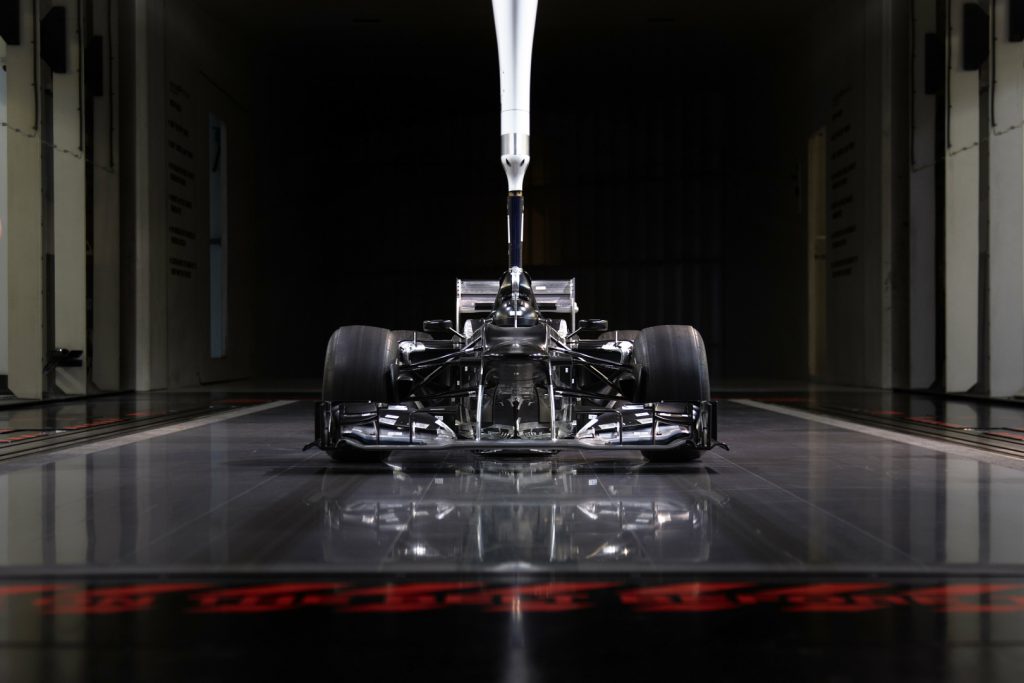Up Next

Mercedes has adapted its aerodynamic development process in a bid to “completely offset” the impact of a lower windtunnel and CFD allowance than its Formula 1 rivals in 2021.
A new rule implemented for this season defines different aerodynamic testing restrictions (ATR) for each of the 10 F1 teams depending on their success the previous year.
The baseline windtunnel and CFD allowance has been cut back for 2021 but the new handicap-style system means the team finishing last in the championship will be allowed 112.5% of those limits, dropping in 2.5% increments for each position to give the top team 90%.
2021 aero testing allowances
| 2020 position | Team | % of aero testing limit | # of windtunnel runs/week in 2021 | # of CFD items/aero testing period in 2021 |
| 1 | Mercedes | 90 | 36 | 1800 |
| 2 | Red Bull | 92.5 | 37 | 1850 |
| 3 | McLaren | 95 | 38 | 1900 |
| 4 | Aston Martin | 97.5 | 39 | 1950 |
| 5 | Alpine | 100 | 40 | 2000 |
| 6 | Ferrari | 102.5 | 41 | 2050 |
| 7 | AlphaTauri | 105 | 42 | 2100 |
| 8 | Alfa Romeo | 107.5 | 43 | 2150 |
| 9 | Haas | 110 | 44 | 2200 |
| 10 | Williams | 112.5 | 45 | 2250 |
As the reigning world champion team again, Mercedes will be permitted 36 windtunnel runs per week in 2021, with last-placed finisher in 2020 Williams having the most with 45.
Mercedes will be able to generate 1800 CFD items during a specific ‘aerodynamic testing period’ (which ranges from 8-10 weeks depending on the time of the year), while Williams will get 2250.
“For us the challenge has been, how do we react to this new regulation in the most positive way?” Mercedes technical director James Allison has said.
“How can we make sure that we don’t get tripped up by it?
“And there the challenge has been, well, if we are not allowed to use as much of our windtunnel and our CFD as we were previously, how could we adapt our world so that we get more and more out of every single opportunity in that wind tunnel?

“If we only got one run in the windtunnel, let’s make that run as valuable to us as possible.
“If we are only allowed to do a small amount of CFD calculation, let’s make it so that the methodology and approach to those CFD calculations are as valuable as possible.
“So, we’ve tried to adapt our approach to this, so we mitigate and maybe even completely offset the effect of this reduction in the amount that we are allowed to use these fundamental tools.”
Another noteworthy consequence of the new ATR handicap is Ferrari, which had a dismal 2020 and is playing catch up, will have five more windtunnel runs per week than Mercedes in the first half of 2021.
That could be a significant benefit because in the first months of this year teams will be balancing 2021-specific aerodynamic work with their early preparation for major new technical rules in 2022.
The ATR handicap system will reset each year on June 30, so team allowances for the rest of 2021 will depend on where they are in the constructors’ championship as of June 30.
But it will become even more significant after 2021 when the allowances will change in 5% increments.
The team finishing last will get 115% of the allowance from 2022, dropping to only 70% for the winning constructor, meaning the top three constructors will be able to conduct less than half the aero work they were carrying out in 2020.
HYPOTHETICAL 2022 AERO TESTING ALLOWANCES
| Hypothetical 2021 position | Team | % of aero testing limit | # of windtunnel runs/week | # of CFD items/aero testing period |
| 1 | Mercedes | 70 | 28 | 1400 |
| 2 | Red Bull | 75 | 30 | 1500 |
| 3 | McLaren | 80 | 32 | 1600 |
| 4 | Aston Martin | 85 | 34 | 1700 |
| 5 | Alpine | 90 | 44 | 1800 |
| 6 | Ferrari | 95 | 38 | 1900 |
| 7 | AlphaTauri | 100 | 40 | 2000 |
| 8 | Alfa Romeo | 105 | 42 | 2100 |
| 9 | Haas | 110 | 44 | 2200 |
| 10 | Williams | 115 | 46 | 2300 |
In addition to adjusting to the new ATR requirements, Mercedes is among the biggest F1 teams dealing with the consequences of an incoming budget cap of $145m.
Mercedes has to redeploy staff and find new efficiencies in its processes to come under the $145m limit, which covers car development and the major elements of race team operations.
Allison said understanding and incorporating the new financial regulations are the biggest non-technical challenges of the new year “by far”.
He said: “We have been working on that all the way through 2020 and carried on working through it over the winter to try and make sure that we’ve first of all understood what the regulation was saying, and second of all tried to find every opportunity that was presented within that set of regulations.
“Every regulation brings opportunities once you can see exactly what they are saying.
“Then [Mercedes needs] to adapt our operation and our company so that we can make the most from it and to be ready for the challenge of this new era of Formula 1 operating under a cost cap.
“That has been a huge body of work that has kept us really on our toes for a long, long time.”





